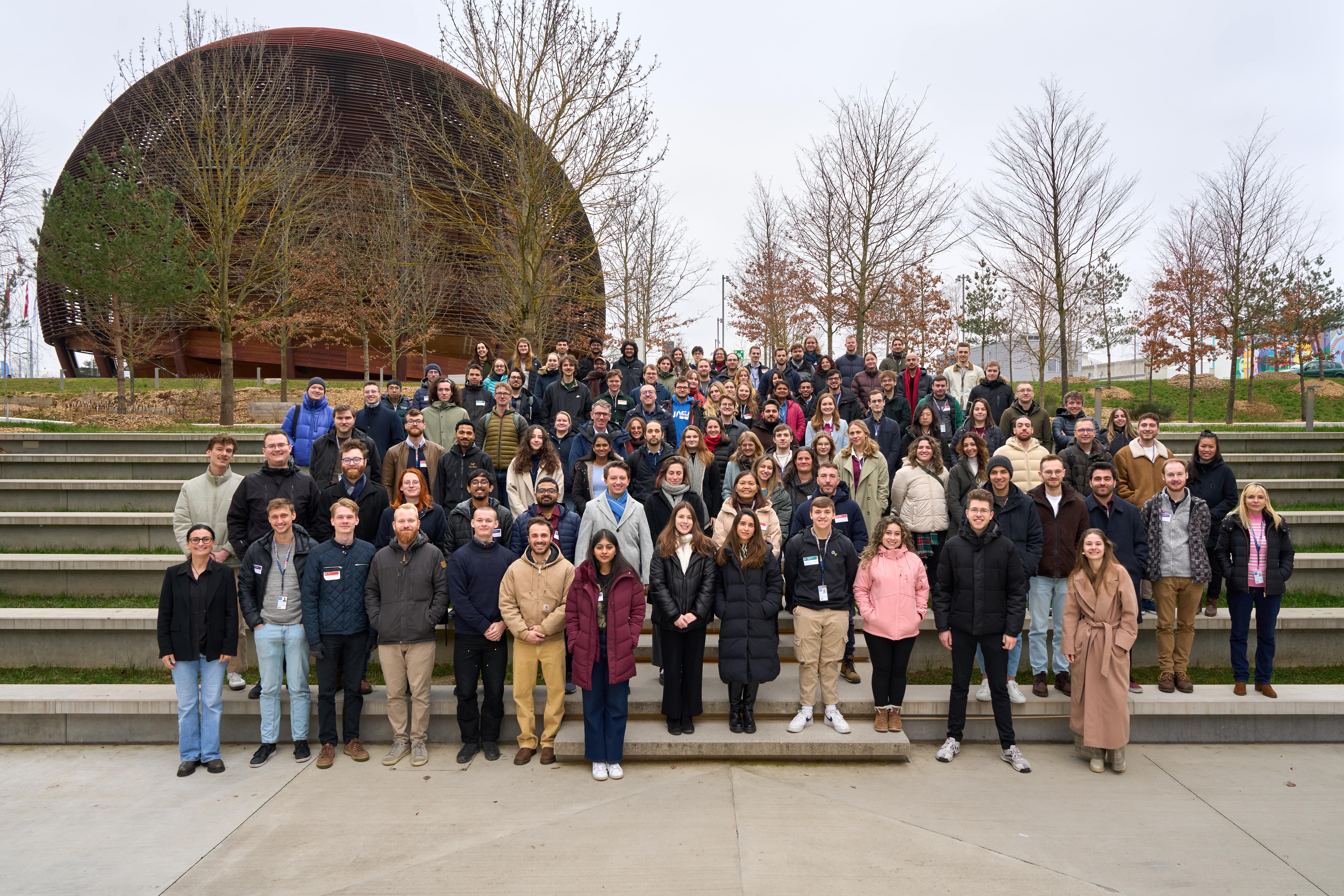
From Dream to Reality: My CERN Internship
Welcome to my personal account of an adventure filled with ups, downs, and unexpected turns. This is the complete, unfiltered story of how I went from struggling to secure a 12‑month internship for my third-year bachelor’s program to finally landing a Technical Student Internship as a Fullstack Developer at CERN. Read on for every twist and turn.

1. The Internship Hunt: Dreaming Big
I was required to search for a 3–4‑month internship as part of my third-year bachelor’s program. Ever since I can remember, I had dreamed of landing an internship in the USA. I spent at least eight months chasing that dream—but thanks to COVID, securing a US internship became a bureaucratic nightmare. American companies were reluctant to deal with all the paperwork, so I reluctantly let that dream rest… at least for the time being. However, I vowed that one day I’d still chase that dream, even if I had to start somewhere else.
2. A Safety Net in Belgium
After accepting what I perceived as a “failure” in not finding an internship abroad, I turned my focus to companies in Belgium. I applied rather late, still clinging to my hope of a USA or Canada placement. Fortunately, I received an offer from one of my dream companies in Belgium—Spatie, renowned for its Laravel packages and innovative projects. It became my safety net, a solid fallback option if nothing else caught my eye.
3. Thinking Outside the Box: Exploring New Avenues
Not content with simply settling, I broadened my search. I applied to big-name companies like Palantir and Google in hopes of “upping my game.” I even got redirected—via the principal of Katowice University of Economics—to a big Polish company. Despite the potential, I turned it down because living in Katowice for 3–5 months just didn’t feel exciting enough (the 1 week international project in Katowice was great though!). I began to focus on what truly inspired me: science, space, physics, fintech, and companies that empower developers worldwide (think IDEs and developer tools).
4. Narrowing Down to What I Love: ESA, CERN, Stripe, and JetBrains
I honed my search to organizations that
resonated with my passions: ESA, CERN, Stripe,
and JetBrains. While ESA and Stripe weren’t
interested in my application, I managed to
secure an interview with JetBrains—and, more
importantly, I decided to give CERN a try.
I applied to CERN—whose locations span
Switzerland (Geneva) and France—with a “YOLO”
mindset. Deep down, I believed I had no chance.
Nonetheless, I gathered every document they
required: school grades, my resume, details of
my experiences, and proof of skills in math,
languages, physics, and more. A huge shoutout
goes to my amazing tutor, Dimitri Casier, who
kindly wrote me a recommendation letter.
5. The CERN Application Process: Tests and Nerves
One of the hurdles was a SONRU test. In short,
SONRU is a brief online assessment that
evaluates both your technical and interpersonal
skills—a quick way for CERN to gauge if you’re
the right fit. I submitted the test and then
pretty much forgot about it.
About a month later, while I was at the gym, I
received an email that made my heart skip a
beat:
“You have been selected as a possible
candidate. We would like to interview
you.”
I was shocked. The email mentioned
that the interview would involve theoretical
coding tests, and for a moment, I considered
skipping it. After some intense deliberation, I
decided to give it a shot—not only for the
chance of landing the internship but also to
gain valuable interview experience. I prepared
using the STARR method, brushed up on LeetCode
exercises (albeit with only moderate success),
and reviewed general coding conventions.
A week later, I booked a room at the university,
grabbed my laptop, and nervously awaited the
interview with two lead developers. They asked
me a mix of theoretical questions and practical
challenges—for example, how to implement a
solution in Java without using a traditional
for-loop (I answered by suggesting the Stream
operator). There were also questions on React
and databases, reflecting the fullstack nature
of the Technical Student position at CERN.
I managed to answer about 60–70% of the
questions, though some topics were outside my
comfort zone.
When they asked about my availability, it turned
out they were looking for someone for a one-year
commitment—far more than the 3–4 months I had in
mind. I explained that I could do at most 3–5
months (maybe 6 months in a pinch). They said
they’d consider it and get back to me.
6. A Rollercoaster of Rejection and Hope
A few weeks later, I received an email
congratulating me on being selected for the
position—starting in February—but with a
one-year minimum commitment. I was ecstatic,
almost in disbelief, wondering if I was
hallucinating. However, when I consulted the
internship coordinator at my university, Howest,
I was told that a one-year internship was not
feasible. With a heavy heart, I had to decline
the offer. I informed Dimitri of the bittersweet
news; he remarked, “This is really sad, but it’s
great to see you got accepted.”
Shortly after, the CERN interviewer emailed me
saying I was the best candidate they had
interviewed—and that he was genuinely
disappointed I couldn’t accept due to the
duration mismatch. I felt my hopes dwindle to
zero.
Then, a couple of days later, Dimitri reached
out again:
“Hey Layton, I really find it unfair that
you were rejected solely because of the
duration period, not because of your skills
or performance. I’m going to contact people
higher up from Howest University and see
what can be done.”
My hopes skyrocketed to 300% once more. Soon
after, Howest University approved the
possibility of a one-year internship (a very big
exception). I immediately replied to the
interviewer, saying, “My university and I have
reached an agreement that I can do an internship
for one year.” Unfortunately, he responded that
the spot had already been filled by the
second-best candidate. I was devastated—another
blow to my already fragile hope.
Determined, Dimitri and Francois (where I was in
a meeting with to discuss this situation) asked
me to share the interviewer’s contact
information with Howest’s higher-ups. After
weeks of emails and back-and-forth calls, the
interviewer came back to me with some promising
news. He arranged another interview for a
different group within the department. This
time, I met with the product owner/supervisor
and a tech lead developer. The interview was
much less technical—since they already knew I
was qualified—and focused on practical questions
like “Could you handle deadlines?” and “Are you
interested in financial aspects?” Within just
three hours after the interview, I received
another email. I hesitated to open it, fearing
another rejection, but eventually did so in the
solitude of my bedroom. And there it was:
I GOT ACCEPTED BY CERN FOR A 1 YEAR
INTERNSHIP AS A TECHNICAL STUDENT FULLSTACK
DEVELOPER WITHIN THE FAP-BC-ENG GROUP!
7. Finalizing the Details: From Documents to Departure
The acceptance was life-changing. However, the celebration was short-lived as I was immediately plunged into a mountain of paperwork—documents, contracts, and final arrangements that took between one and three months to finalize. Next came the logistical challenge of moving from Belgium to Switzerland (Geneva). This move has been a real challenge for me since I did it all on my own. I never even mastered the art of handling day-to-day tasks and paperwork in my own country, let alone in Switzerland. Learning how to live independently, manage unfamiliar bureaucratic processes, and navigate a whole new environment has pushed me out of my comfort zone. It’s been a steep learning curve, but every challenge is a step toward growth and self-reliance—and I'm determined to make it work, no matter what.
Housing and Moving
Housing turned out to be a major headache. After
some time, I found a modern (2023-built) student
residence that turned out to be amazing—no
regrets about renting here for the entire year.
I then had to plan my transport to Geneva to
ensure I arrived by 3:00 PM (15:00) on February
1st, since my first working day was on February
3rd at 8:15 AM (08:15)—which was also one day
before my birthday! Flying wasn’t an option
because I needed to bring along my monitors,
gaming PC, office desk and chair, and personal
decorations.
Fortunately, after a couple of weeks, my dad
offered to help by transporting everything in a
medium-sized van. Huge thanks to Dad for that! I
also had to visit my local town hall to update
my address (since I was no longer a Belgian
resident)—a task that needed to be completed the
day before my arrival. Setting up a bank account
was next; I chose UBS because they’re
well-versed in dealing with CERN’s temporary
interns, although I plan to switch to Yuh later.
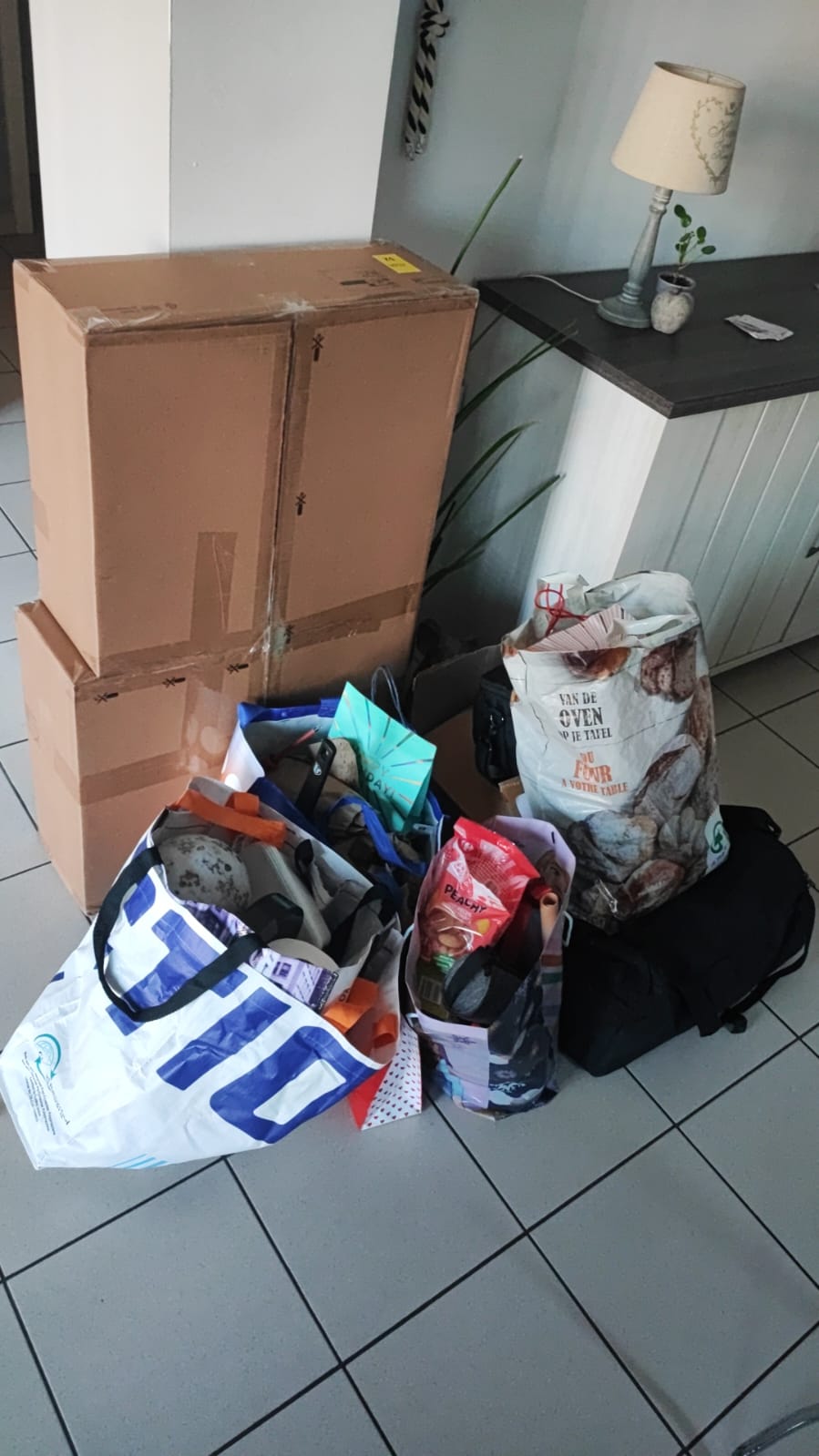
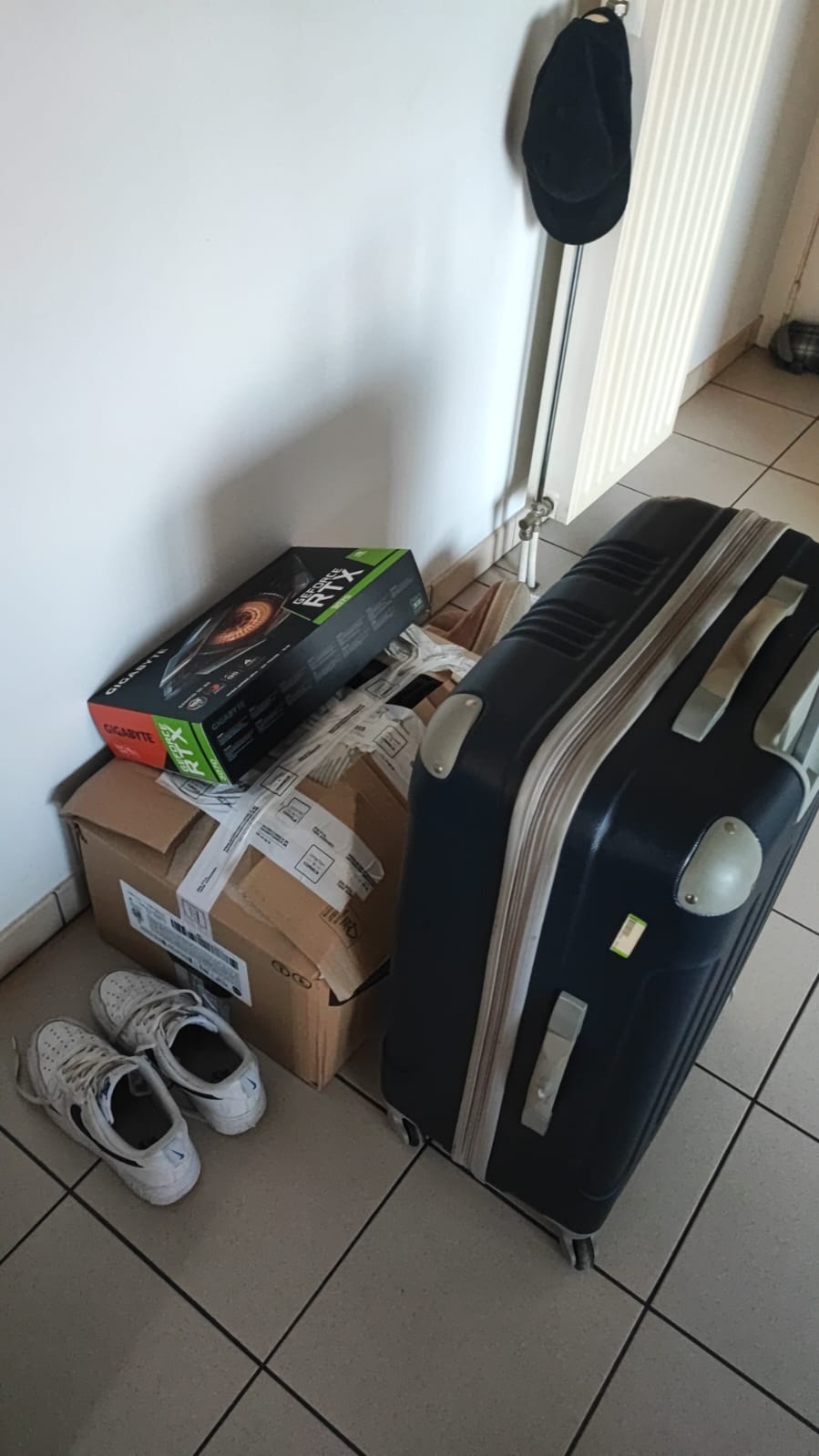
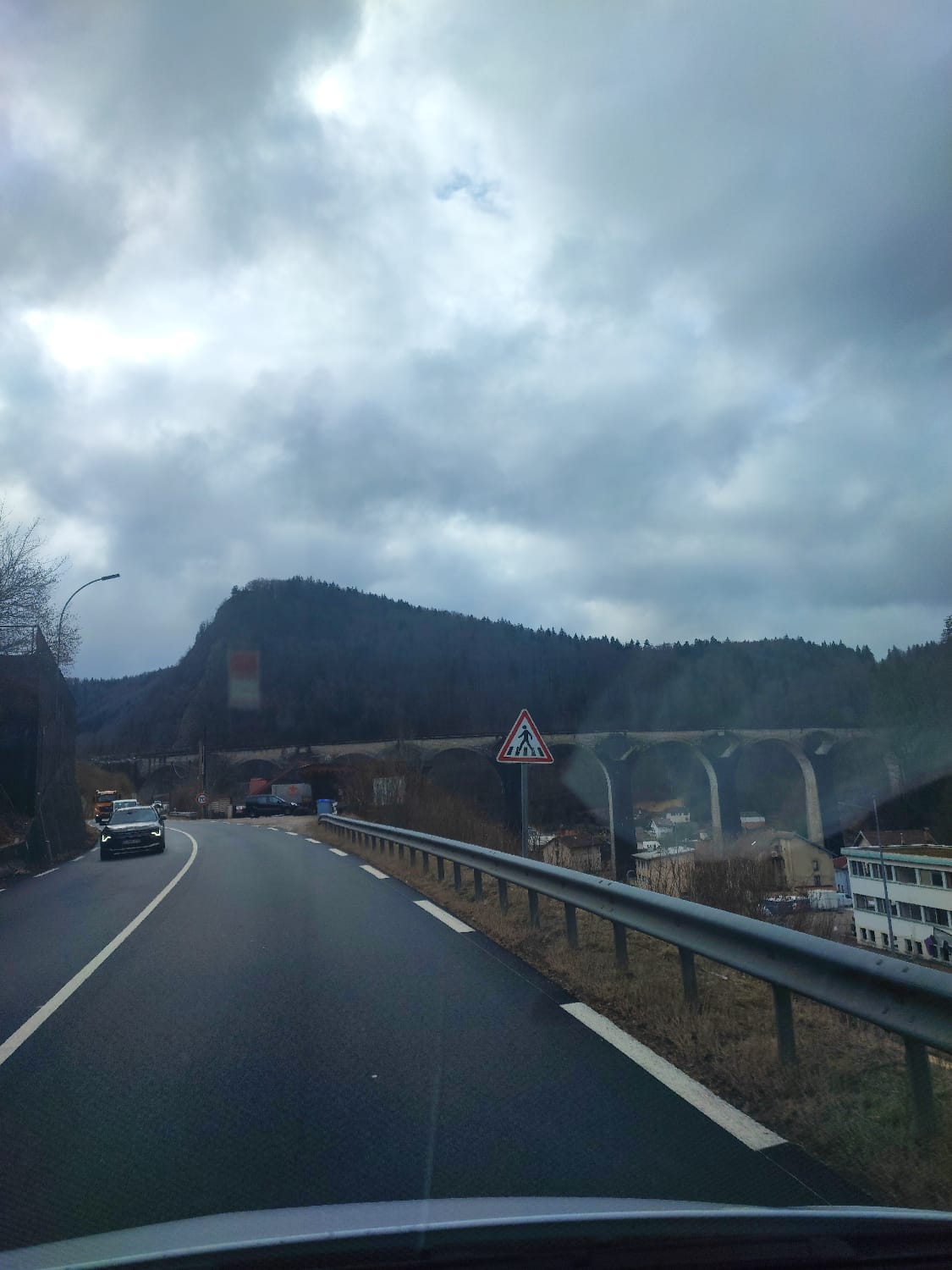
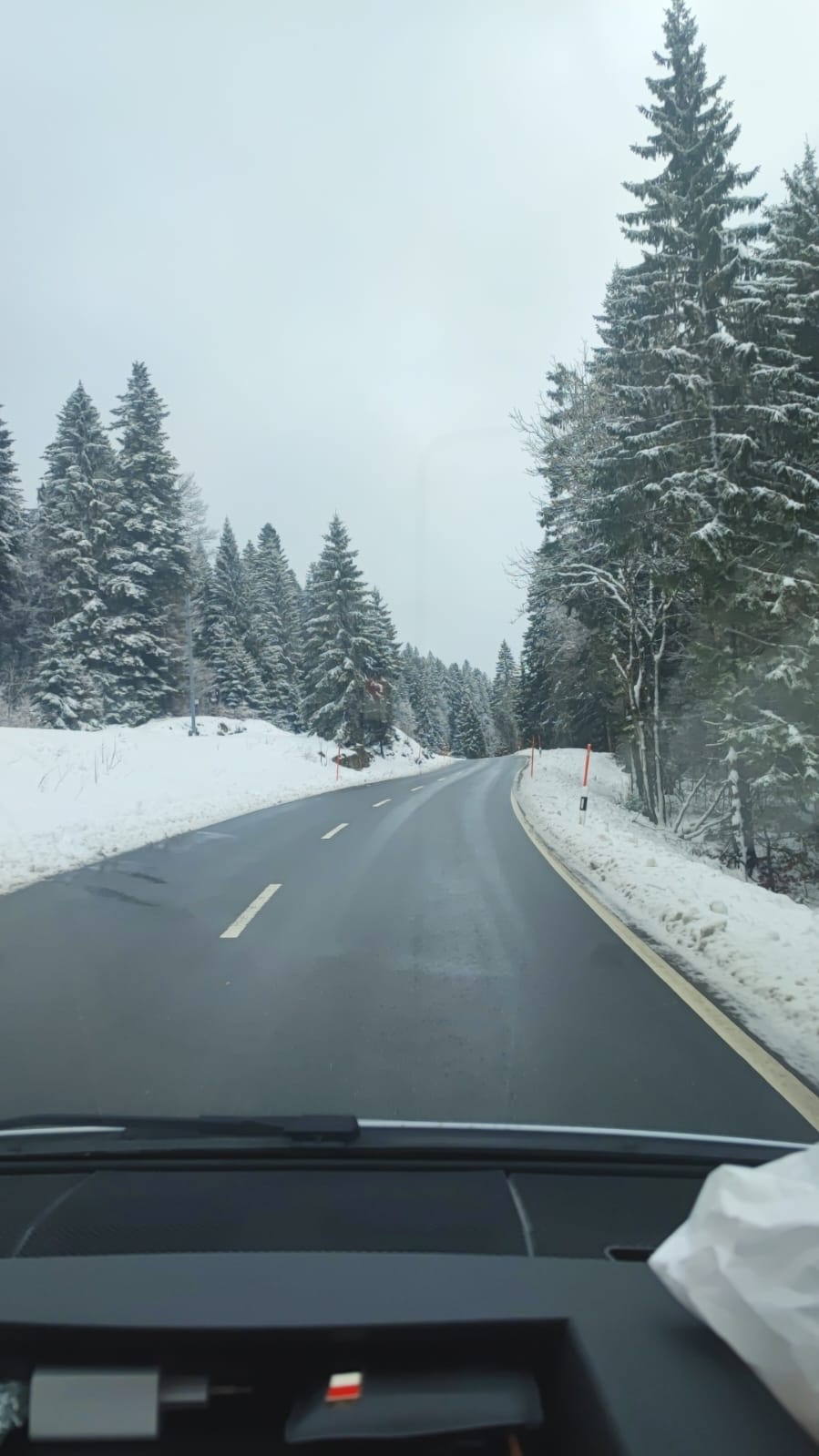
Farewells and Mixed Emotions
With everything set up and my belongings packed
(pans, kitchen utensils, and more), it was time
to say goodbye to my mother, girlfriend, and
friends. For my last night before departure, my
girlfriend surprised me with an evening at
Mozart—a popular Volonté Ribs restaurant in
Bruges. I thought it would just be the two of
us, but when I arrived, I found a table of 12
people. She had organized a heartfelt farewell
party complete with many presents (thanks to all
my friends and, of course, my amazing
girlfriend).
On the morning of departure, we left at 5:40 AM
(05:40). The mix of emotions was
overwhelming—leaving behind everything familiar
was far tougher than I imagined, but sometimes
you must take bold steps to achieve your dreams.
The road trip took approximately 9 hours, with
several stops along the way.
I finally arrived on Friday, January 31st—a day
earlier than planned because I discovered at the
last minute that in Switzerland you can’t move
in on the weekends (customs and real estate
offices are closed for key transfers). After a
quick tour of my new, surprisingly spacious
studio, my dad checked into the hotel next door
and left in the morning, leaving me to face this
new chapter entirely on my own.
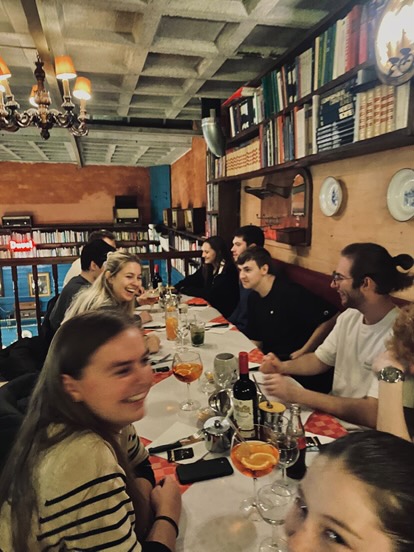

8. First Day at CERN: Onboarding and New Beginnings
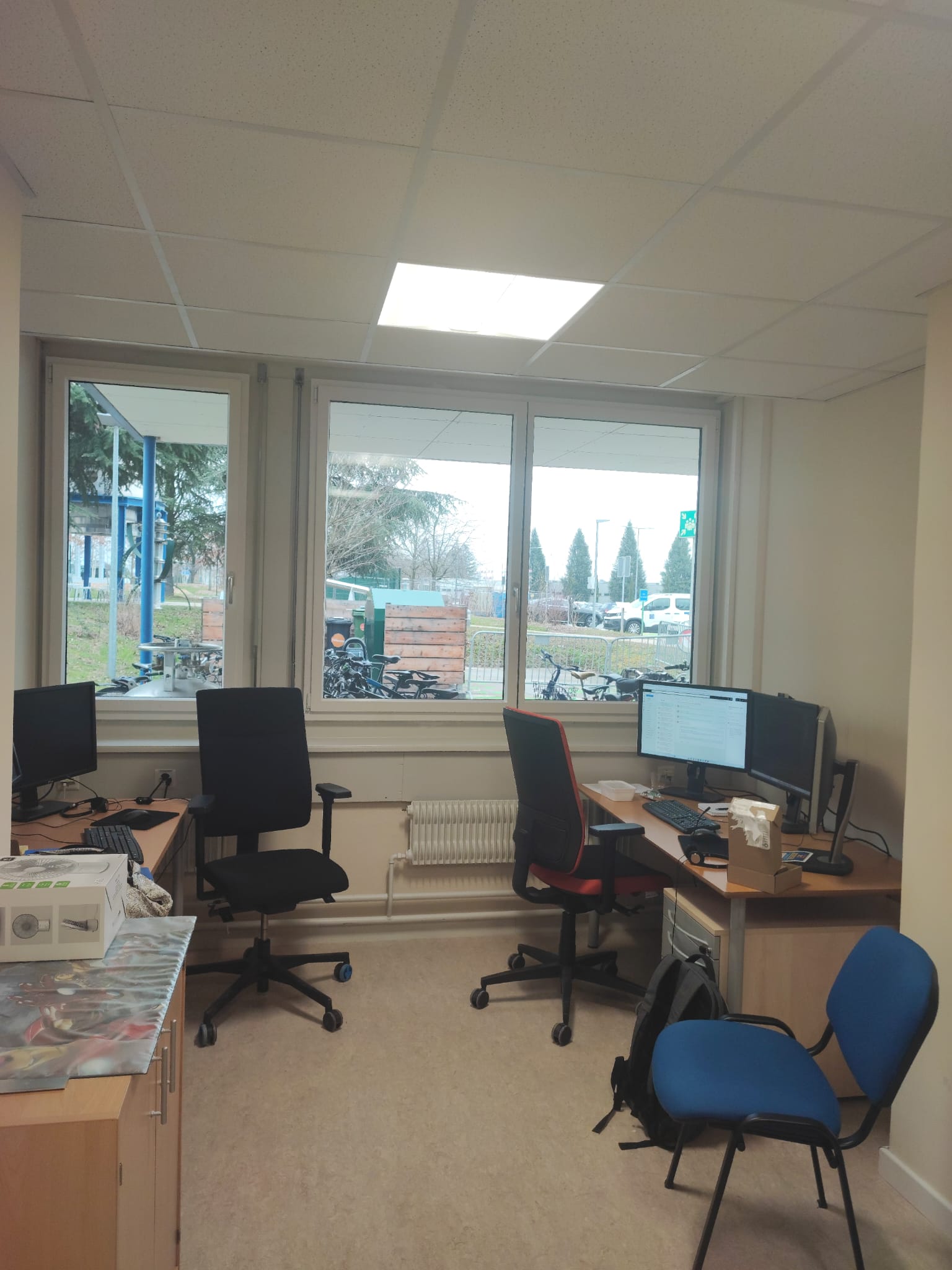
Setting up my new place was a whirlwind. I
installed everything—from my gaming setup to my
kitchen utensils and clothing—and before I knew
it, my first day at CERN had arrived.
I reached CERN at 7:30 AM (07:30) to pick up my
access badge (I was buzzing with excitement!).
Then, at 8:15 AM (08:15), I attended an
introductory session in a striking wooden
structure that symbolizes the Earth. Surrounded
by 60–100 fellow students, we enjoyed a quiz,
breakfast, and a session filled with fascinating
insights about CERN. Shortly thereafter, our
department supervisor introduced us to our new
office and integrated us into the team—an
experience that made me feel right at home.
While CERN’s offices might not boast the
ultra-modern aesthetics of some tech giants, I
appreciated the academic, slightly “lived-in”
vibe. I now have a setup with three monitors and
a reliable desktop PC—a perfect combination for
a student space where creativity meets a touch
of organized chaos.
9. A Walk Through History: Discovering the Birthplace of the Web
On my first day at CERN, after settling in and picking up my access badge, I took a moment to explore the corridors of the building. It was incredible to stumble upon a hallway where, as legend has it, Tim Berners-Lee once worked. Right there hangs a sign that proudly states "Where the WEB was born" Knowing that this historic spot is just a stone's throw away from my own office added an extra layer of excitement and inspiration to my journey.
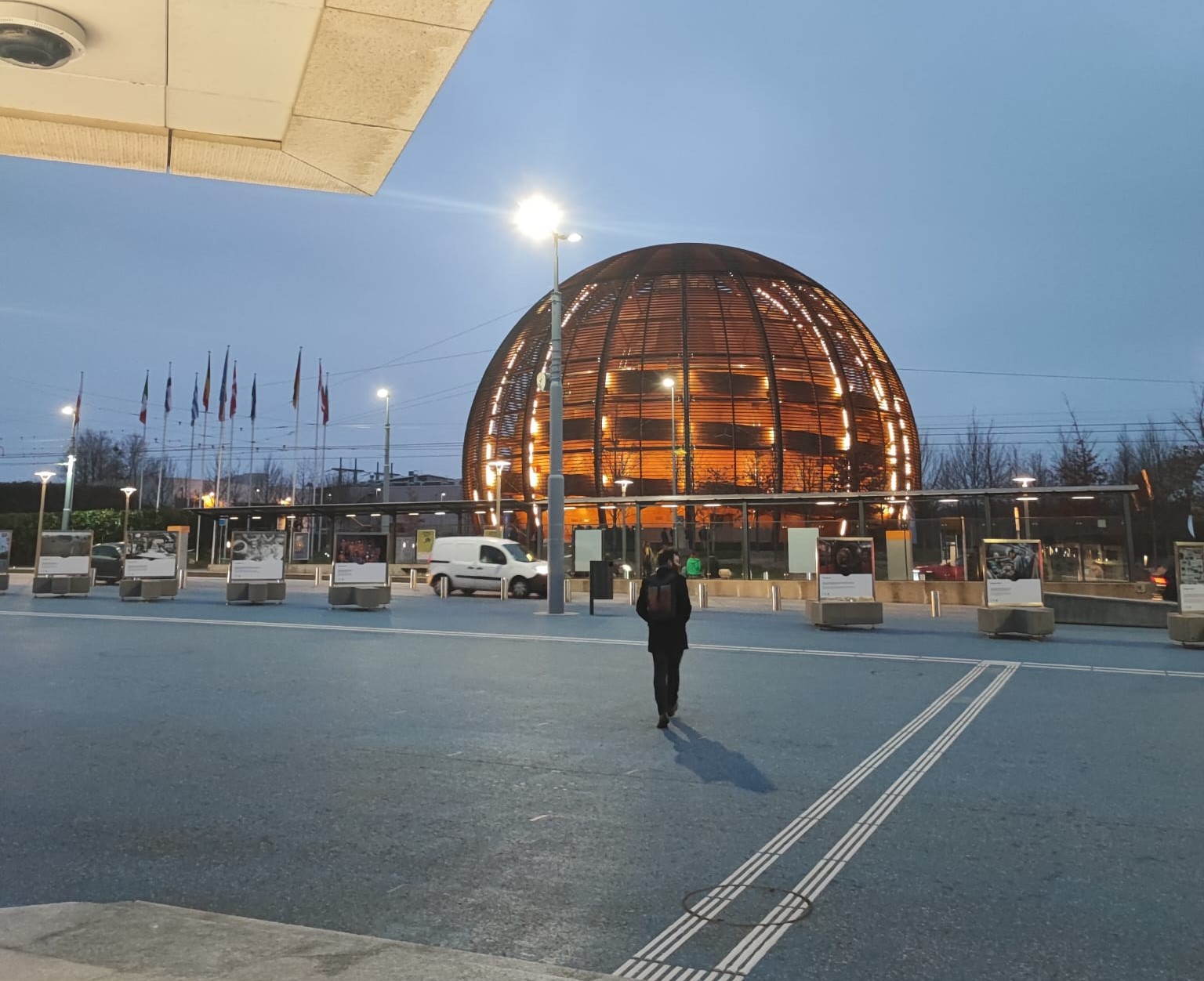
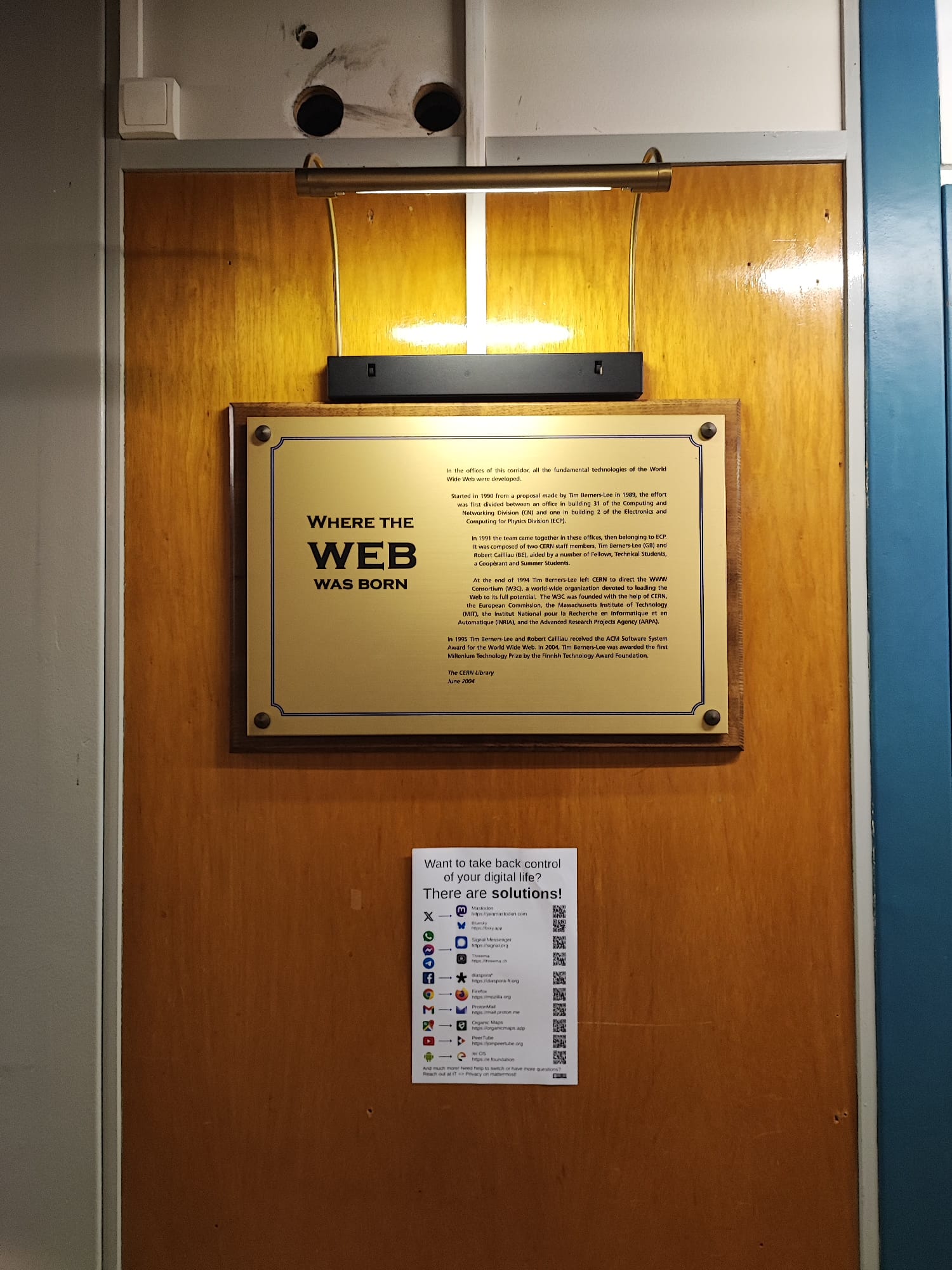
10. Settling into the Daily Routine
The onboarding process was extensive. My fellow
graduate colleague (a “GRAD”—someone who has
just gained a bit of professional experience
post-graduation) and I spent 4–5 days working
through countless onboarding documents,
installing essential tools, and familiarizing
ourselves with the department’s procedures and
project diagrams.
As of this writing—Friday, February 7th,
2025—I've wrapped up the onboarding. Now begins
the real work: getting to know the codebase, the
tools, and the procedures for the three to four
projects I’ll be contributing to (with one
project being my main focus at the moment). I
even made my first pull request today—a simple
update to the README file to correct the
outdated build and run command. That small
change marked my first speaking moment during
our daily standup meeting, and it was incredibly
exhilarating.
Daily Work Hours
Officially, CERN’s working hours are from 9:00 AM to 6:00 PM (09:00–18:00), including a one-hour lunch break. However, I’ve found that I prefer to start my day early, arriving at 7:30 AM (07:30). I typically take only a 30-minute lunch break, which means I often leave around 4:00 PM (16:00). Of course, if meetings or extra tasks extend my day, I adjust by arriving later the following day—since the rule is eight hours of work per day, any overtime allows for a delayed start.
11. The First Two Weeks: A Fast Start and a Steep Learning Curve
The first two weeks at CERN have been absolutely
awesome, and I’ve already learned so much. I
have to admit, I owe a huge thanks to Howest for
equipping me with the practical skills that have
given me an edge. Compared to students or
graduates with a more theoretical background, I
feel that my hands-on courses have given me a
solid foundation in real-world development. It’s
been exciting to see so many concepts I learned
in my previous courses come to life here.
One of the biggest challenges so far has been
navigating the massive codebases—something
completely new to me. CERN also uses some
architectural approaches I wasn’t familiar with
before, like Modulith architecture, whereas I
had only worked with microservices before. It’s
been fascinating to dive into these new
concepts, and I’m stoked to keep expanding my
knowledge. It’s only been two weeks, and there’s
still a long journey ahead. I know the first
months will be slow and challenging, but that’s
just part of the experience. I’m confident that
I’ll continue to grow and learn a ton in the
coming months!
12. My First YouTube Video: A CERN Journey Begins
I recently uploaded my first video on my YouTube channel, where I shared my experience of starting at CERN. In the video, I give a behind-the-scenes look at my first impressions, the excitement of joining such an iconic institution, and the challenges I’ve faced so far. It's a mix of personal reflection and practical insights into what it’s like working at CERN as an intern. I'm excited to continue documenting my journey, and I hope it inspires others to pursue similar opportunities!
13. Looking Forward
Every step of this journey—from the initial
failed attempts at landing a US internship to
the nerve-wracking interviews and the final
joyous acceptance at CERN—has taught me
something invaluable. Today marks not just the
beginning of my work at CERN, but also the start
of a new chapter filled with learning, growth,
and the pursuit of passion. I’m excited to dive
deeper into my projects, contribute to
innovative solutions, and continue evolving as a
developer and as a person.
Thank you for reading my detailed story. I hope
it inspires you to persevere—even when the path
seems filled with setbacks. Remember, sometimes
the road to your dreams is anything but
straightforward, but every twist and turn brings
you closer to where you’re meant to be.
Stay tuned for more updates in the near future as I continue my CERN adventure!
Get In Touch
Let's make your brand brilliant!
If you would like to work with us or just want to get in touch, I’d love to hear from you!
...or social media: